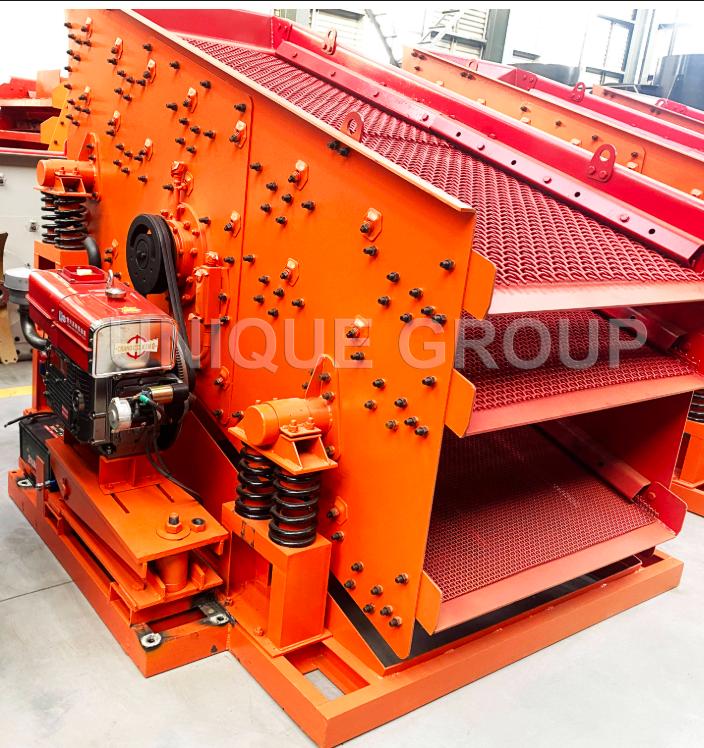
 Hot Product
Hot Product
 Vibrating screens are essential equipment in industries such as mining, construction, agriculture, and recycling. They efficiently separate materials by size, ensuring product quality and process efficiency. However, sometimes the screening performance does not meet expectations, leading to inefficiencies, increased costs, and production delays. This article explores the common reasons behind substandard vibrating screen performance and provides practical solutions.
Vibrating screens are essential equipment in industries such as mining, construction, agriculture, and recycling. They efficiently separate materials by size, ensuring product quality and process efficiency. However, sometimes the screening performance does not meet expectations, leading to inefficiencies, increased costs, and production delays. This article explores the common reasons behind substandard vibrating screen performance and provides practical solutions.
The screen mesh (or sieve) is crucial in determining the screening efficiency. If the mesh size is too large, fine particles may pass through undesirably, while an overly fine mesh can cause clogging and reduce throughput.
· Material Characteristics: Different materials (e.g., wet, sticky, or abrasive) require specific mesh types (woven, polyurethane, or rubber).
· Particle Size Distribution: If the feed contains a wide range of particle sizes, multi-deck screens may be necessary.
· Open Area Percentage: A higher open area improves throughput but may reduce accuracy.
Solution: Select the appropriate mesh size and material based on the feed properties and desired output.
The vibration amplitude, frequency, and angle significantly impact screening efficiency.
l Low Vibration Amplitude/Frequency: Insufficient vibration leads to poor material stratification and blinding (particles clogging the mesh).
l Excessive Vibration: Overly aggressive vibration can damage the screen and cause premature wear.
l Incorrect Screen Angle: A steep angle speeds up material flow but reduces accuracy, while a shallow angle improves precision but may reduce capacity.
Solution: Adjust vibration intensity and screen angle according to material properties and production requirements.
The feed material's characteristics play a major role in screening efficiency.
l High Moisture Content: Wet or sticky materials tend to clog screens (blinding).
l Excessive Fines or Oversized Particles: Uneven particle distribution can overload the screen.
l Abrasive Materials: These accelerate wear and tear on the screen mesh.
Solutions:
l Use heated screens or air-assisted vibration for wet materials.
l Pre-classify materials to remove oversized or fine particles before screening.
l Choose wear-resistant screen materials (e.g., polyurethane or rubber-coated mesh).
Over time, vibrating screen components degrade, reducing efficiency.
l Screen Mesh: Holes may stretch or tear, allowing oversized particles to pass.
l Springs & Bearings: Worn-out springs reduce vibration efficiency, while damaged bearings cause uneven motion.
l Motor & Drive System: Faulty motors lead to inconsistent vibration patterns.
Solution: Implement a regular maintenance schedule, including:
l Inspecting and replacing damaged screen meshes.
l Lubricating bearings and checking motor alignment.
l Monitoring vibration patterns for abnormalities.
Uneven material distribution on the screen surface can lead to localized overloading, reducing efficiency.
l Incorrect Feed Rate: Too much material overwhelms the screen, while too little reduces productivity.
l Poor Chute Design: If the feed does not spread evenly, some areas get overloaded.
Solution:
l Use a feed distributor or adjustable chute to ensure uniform material flow.
l Optimize the feed rate to match the screen’s capacity.
A vibrating screen’s failure to meet screening standards can stem from multiple factors, including improper mesh selection, incorrect vibration settings, material properties, mechanical wear, and feeding issues. By systematically diagnosing and addressing these problems, operators can enhance screening efficiency, reduce downtime, and improve product quality. Regular maintenance, proper setup, and material handling adjustments are key to ensuring optimal performance.
By understanding these challenges and implementing corrective measures, industries can maximize the effectiveness of their vibrating screens, leading to smoother operations and higher productivity.

Copyright © 2013 Zhengzhou Unique Industrial Equipment Co., Ltd. All Rights Reserved.


